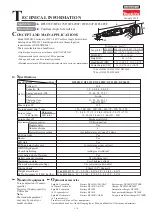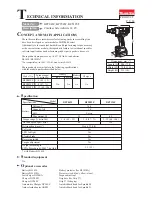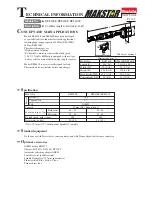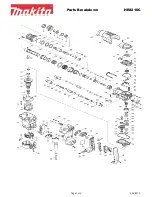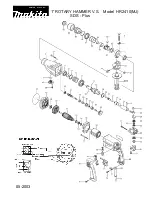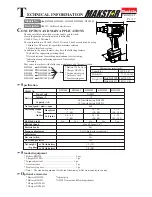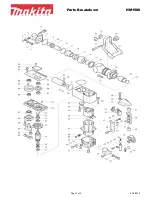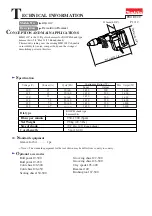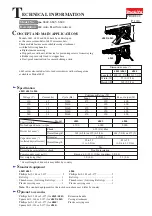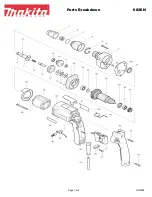
TM 11-6625-2958-14&P
Table 5-1.
Test Equipment Required (Continued)
TYPE
REQUIRED
RECOMMENDED
CHARACTERISTICS
USE
MODEL
Terminating
Value: 50 ohms, ½ watt, ±5%,
Noise spike measure-
- - - -
Resistors
non-inductive. (Four required.)
ment.
Blocking
Value: 0.01µF, 100Vdc. (Two
Noise spike measure-
- - - -
Capacitors
required.)
ment.
1
NOTE
A satisfactory substitute for a differen-
tial voltmeter is a reference voltage
source and null detector arranged as
shown in Figure 5-1. The reference
voltage source is adjusted so that the
voltage difference between the supply
being measured and the reference volt-
age will have the required resolution
for the measurement being made. The
voltage difference will be a function of
the null detector that is used. Exam-
ples of satisfactory null detectors are:
419A null detector, a dc coupled
oscilloscope utilizing differential in-
put, or a 50mV meter movement with a
100 division scale. For the latter, a
2mV change in voltage will result in a
meter deflection of four divisions.
Differential Voltmeter Substitute
Test Setup
Care must be exercised to avoid ground
loops and circulating currents when
using an electronic null detector in
which one input terminal is grounded.
5-6 The following test can be used as an incoming
inspection check and appropriate portions of the
test can be repeated either to check the operation
of the instrument after repairs or for periodic main-
tenance tests. The tests are performed using a 230V
ac, 60 Hz, single phase input power source. If the
correct result is not obtained for a particular check,
do not adjust any internal controls; proceed to
troubleshooting (Paragraph 5-5 1).
5-8 If maximum accuracy is to be obtained in the
following measurements, the measuring devices
must be connected as close to the output terminals
as possible. This is particularly important when
measuring the transient response, regulation, or
ripple of the power supply. A measurement made
across the load includes the impedance of the leads
to the load and such lead lengths can easily have
an impedance several orders of magnitude greater
than the supply impedance, thus invalidating the
measurement.
5-9 To avoid mutual coupling effects, each moni-
toring device must be’ connected to the output ter-
minals by a separate pair of leads. Twisted pairs
or shielded two-wire cables should be used to avoid
pickup on the measuring leads. The load resistor
should be connected across the output terminals as
close to the supply as possible. When measuring
the constant voltage performance specifications, the
current controls should be set well above (at least
10%) the maximum output current which the supply
will draw, since the onset of constant current
action will cause a drop in output voltage, increased
ripple, and other performance changes not properly
ascribed to the constant voltage operation of the
supply .
5-10 Voltage Output and Voltmeter Accuracy. To
check the output voltage, proceed as follows:
a. Connect load resistor (R
L
) indicated in
Figure 5-2 across output terminals of supply.
b. Connect differential voltmeter acress
+OUT and -OUT terminals of supply, observing
Содержание 6260B
Страница 70: ...Figure 7 4 Bottom Front Chassis Assembly Component Location Diagram 7 4 TM 11 6625 2958 14 P ...
Страница 80: ...SECTION II MAINTENANCE ALLOCATION CHART TM 11 6625 2958 14 P D 3 ...
Страница 83: ...Figure 7 11 Schematic Diagram Model 6269B ...
Страница 88: ......
Страница 89: ......
Страница 91: ......
Страница 92: ......
Страница 93: ......
Страница 94: ...THE METRIC SYSTEM AND EQUIVALENTS ...
Страница 95: ...PIN 046413 000 ...
































